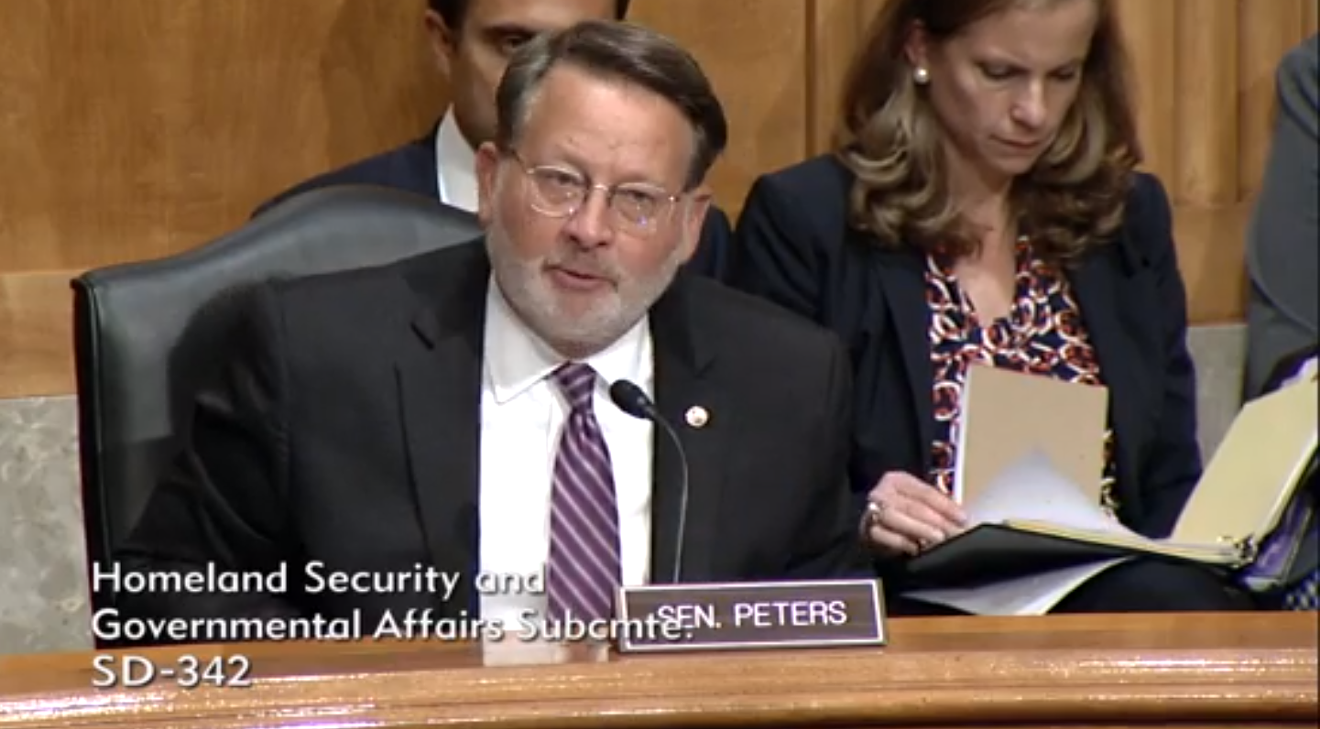Clean-water advocates are demanding that the federal government take immediate action to battle a water contaminant crisis that's spilled into Colorado. And they let Environmental Protection Agency and other federal government officials know just that at a Senate Subcommittee on Federal Spending Oversight and Emergency Management hearing on Wednesday, September 26. The hearing focused on water contamination from per- and polyfluoroalkyl substances, or PFAS, a family of chemicals that comes from waterproofing products and firefighting foam.
Residents of El Paso County don't want to wait. Firefighting foam used by Peterson Air Force Base is the main culprit behind PFAS contamination in their water supply; as we've previously reported, the U.S. military has known for decades that PFAS exposure was linked to illness.
But until recently, El Paso County residents were unaware of the toxic substances they were ingesting. In May 2016, they got a rude awakening when the EPA lowered its advisory level from 400 to 70 parts per trillion. El Paso County water districts immediately tested their water and found that some supplies had higher levels of PFAS contamination than what the EPA recommended. The Widefield aquifer, a water source for 70,000 Coloradans, was one of the contaminated areas.
El Paso County residents aren't alone; the vast majority of Americans have been exposed to PFAS. A study from 2013, which came out of a class-action lawsuit against chemical companies, linked PFAS exposure to multiple diseases, including ulcerative colitis, pregnancy-induced hypertension, thyroid disease, testicular cancer and kidney cancer.
The House Energy Subcommittee on Energy and the Environment hosted its own three-hour hearing on PFAS contamination and exposure on September 6; Congresswoman Diana DeGette sits on that subcommittee. No Colorado senators serve on the Senate subcommittee, but Americans across the country are facing problems linked to PFAS.
The federal government is at least a year away from finishing the process of establishing a maximum contaminant level for the family of chemicals and declaring them to be hazardous substances, according to Peter Grevatt, director of the Office of Ground Water and Drinking Water at the EPA. "It will take some number of years to complete that action," Grevatt told the Senate hearing.
Michigan Senator Gary Peters, ranking member of the subcommittee, wants to see his constituents get justice now. “When you hear talk this may take five or ten years, that’s unacceptable,” he said.
Arnold Leriche, a retired EPA environmental engineer and resident of Oscoda, Michigan, one of the contaminated locations, agreed with his senator. "The people of Oscoda don’t have any more time for delays or missteps. We need actions now. We want the responsible parties and the federal government to take this seriously right now. We already have enough information for them to take action," Leriche said at the hearing.
But federal agencies such as the EPA insist that they must wait for the scientific evidence before changing regulations; the EPA must also hold a comment and hearing period before finalizing any regulation changes regarding PFAS.
The EPA advisory level is currently set at 70 parts per trillion, but that's just a suggestion. Some states, such as New Jersey, have their own legally binding maximum contaminant level; New Jersey's is set at 14 parts per trillion. The Agency for Toxic Substances and Disease Registry, a federal agency within the U.S. Department of Health and Human Services, published a report in June showing that PFAS exposure was detrimental even at levels well below 70 parts per trillion.
Asked by Senator Jeanne Shaheen of New Hampshire whether the EPA was planning to lower its 70 parts per trillion advisory in the future, Grevatt said that he didn't think so: "We believe that our health advisories are supported by the strongest science."
Mark Favors, whose relatives in El Paso County have been ingesting contaminated water for decades, traveled to D.C. for the hearing. He and others in the audience were irked by Grevatt's admission that 70 parts per trillion would be used for any future maximum contaminant level, and he's also concerned that solutions are taking too long to be implemented. "There was nothing about immediacy," he says. "We didn’t get the feeling like we’re going to have something soon."
The EPA has assigned a liaison to the El Paso community to serve as a point person regarding the county's problems with PFAS exposure.
But these residents aren't waiting for the EPA to take action. In addition to forming a coalition to get their aquifer fully decontaminated, some have joined a class-action lawsuit against PFAS manufacturers. The first hearing in that case is set for November 30 in the U.S. District Court of Colorado.
The lawsuit does not include Peterson Air Force Base. Louise Caro, the lawyer representing the El Paso County residents, says that winning a case against the base would be incredibly difficult. She also points out that the base is attempting to fix the mess to which it contributed.
In response to questions regarding its cleanup protocol, Peterson sent a statement describing some of the steps it is taking and the money being allocated to help ensure that nearby residents have safe drinking water.
[
{
"name": "Air - MediumRectangle - Inline Content - Mobile Display Size",
"component": "12017618",
"insertPoint": "2",
"requiredCountToDisplay": "2"
},{
"name": "Editor Picks",
"component": "17242653",
"insertPoint": "4",
"requiredCountToDisplay": "1"
},{
"name": "Inline Links",
"component": "18838239",
"insertPoint": "8th",
"startingPoint": 8,
"requiredCountToDisplay": "7",
"maxInsertions": 25
},{
"name": "Air - MediumRectangle - Combo - Inline Content",
"component": "17261320",
"insertPoint": "8th",
"startingPoint": 8,
"requiredCountToDisplay": "7",
"maxInsertions": 25
},{
"name": "Inline Links",
"component": "18838239",
"insertPoint": "8th",
"startingPoint": 12,
"requiredCountToDisplay": "11",
"maxInsertions": 25
},{
"name": "Air - Leaderboard Tower - Combo - Inline Content",
"component": "17261321",
"insertPoint": "8th",
"startingPoint": 12,
"requiredCountToDisplay": "11",
"maxInsertions": 25
}
]












